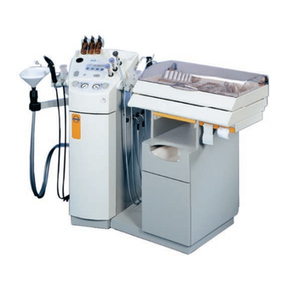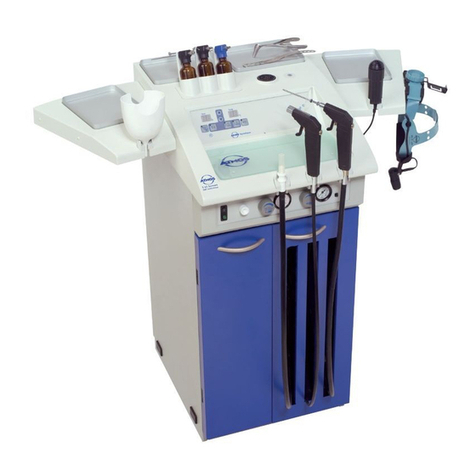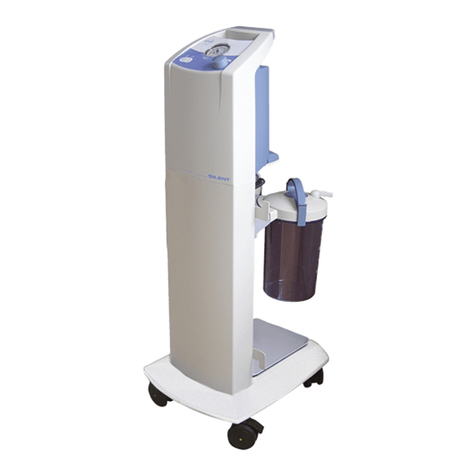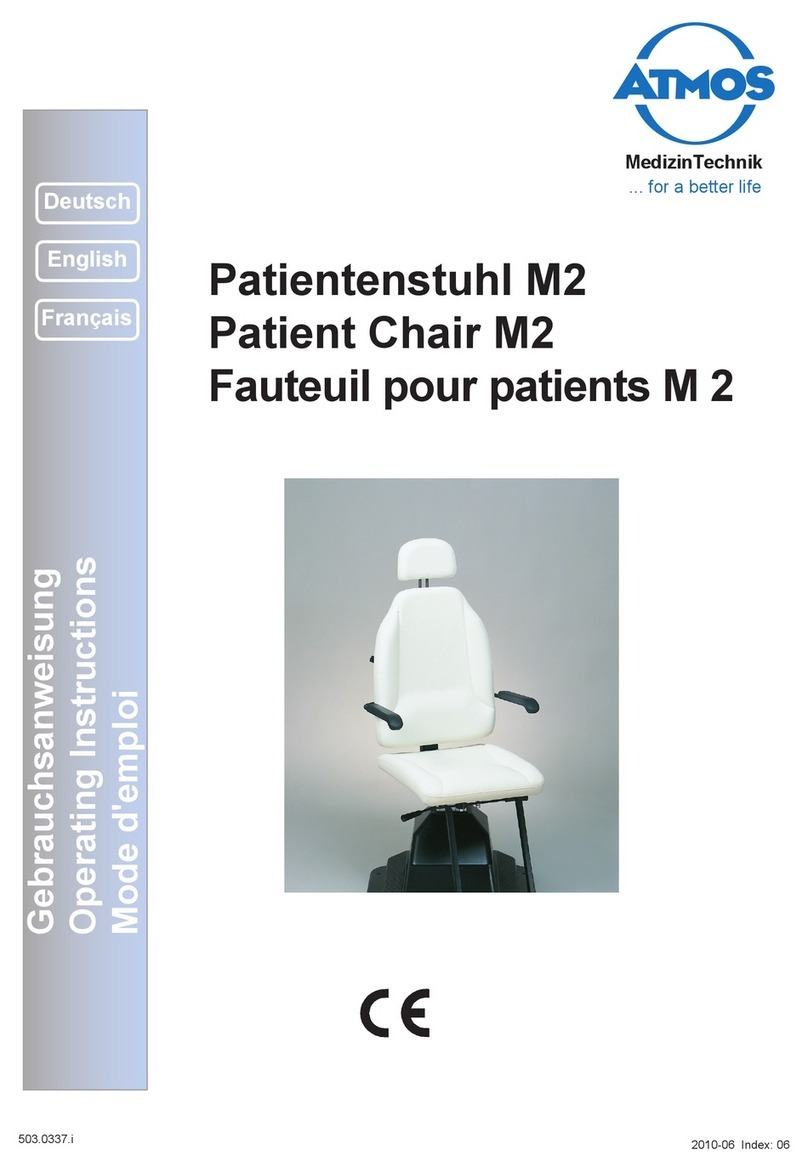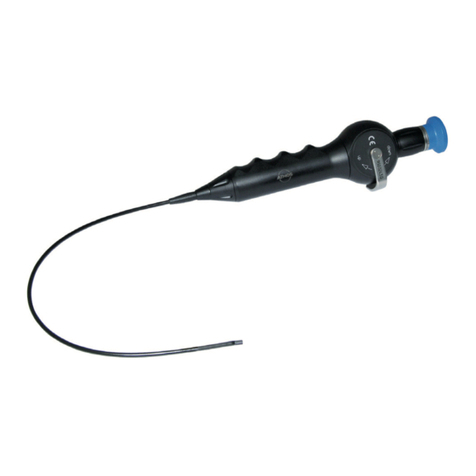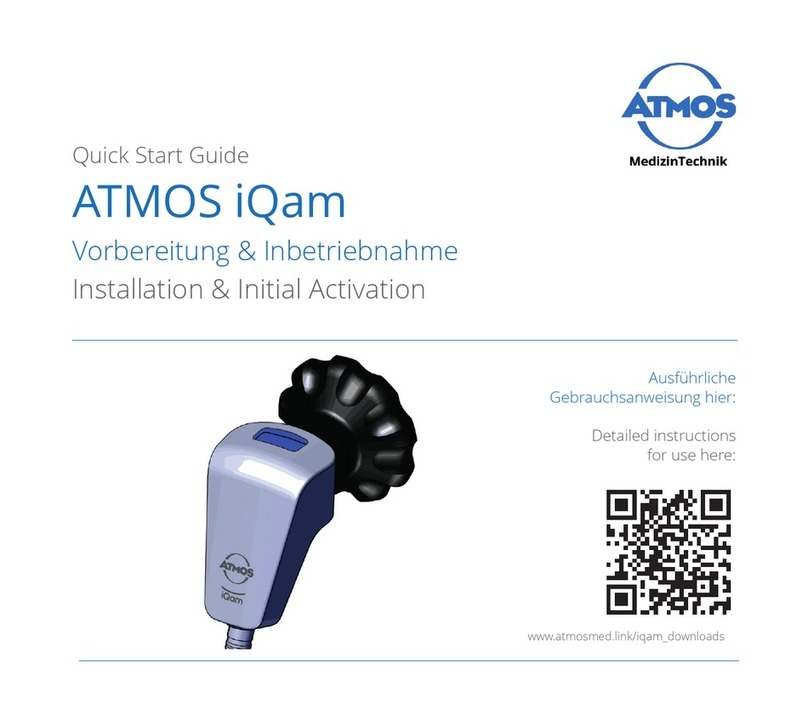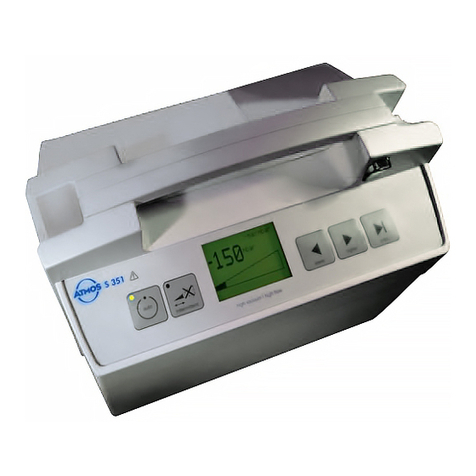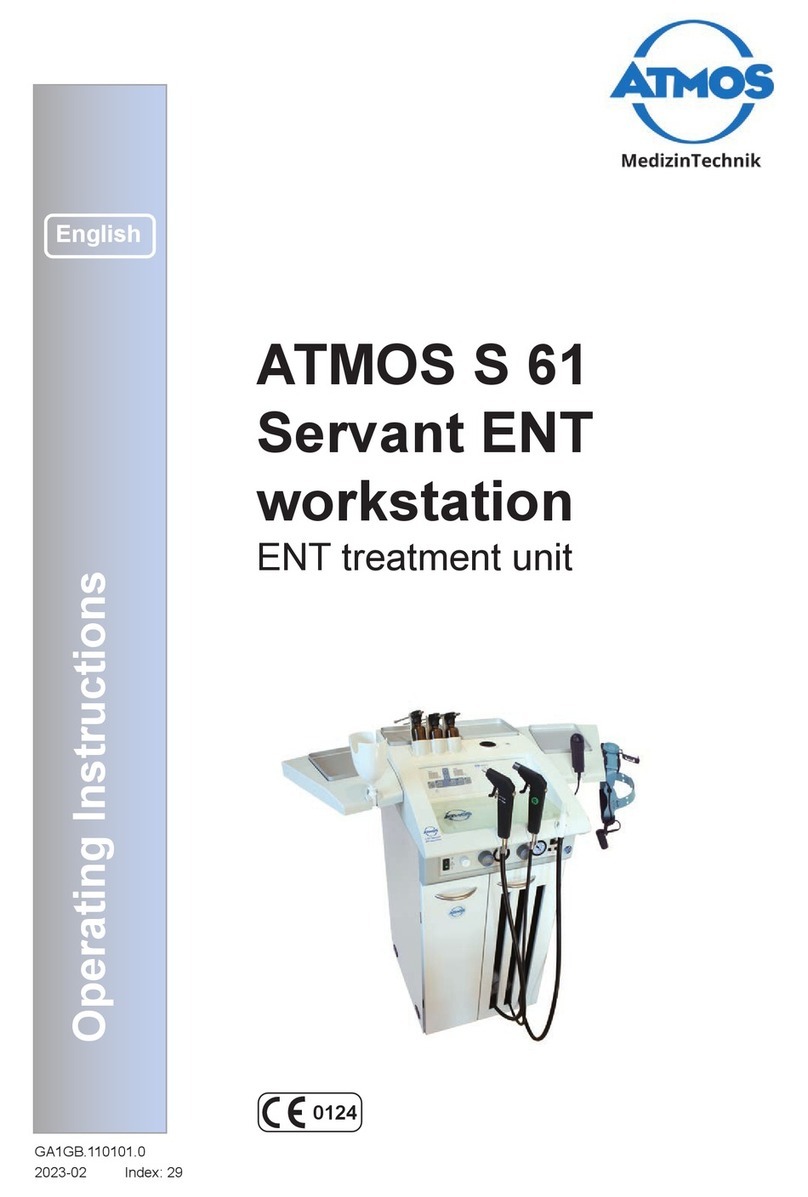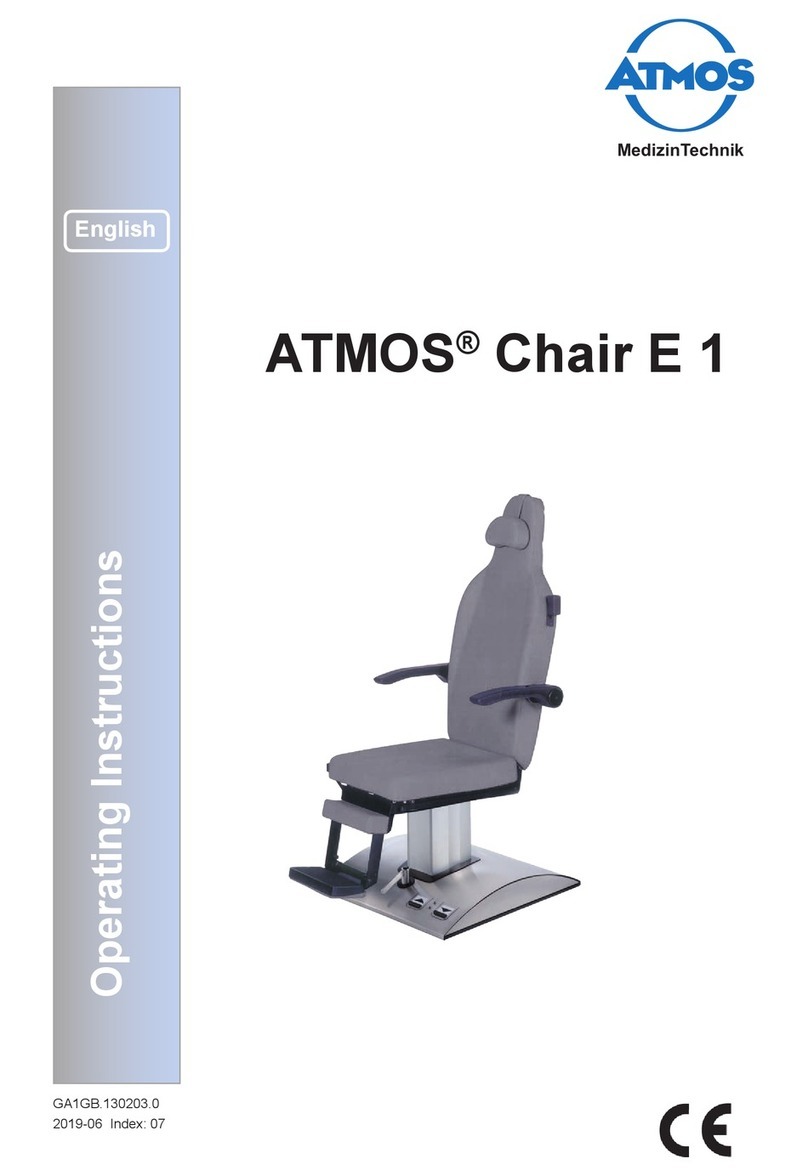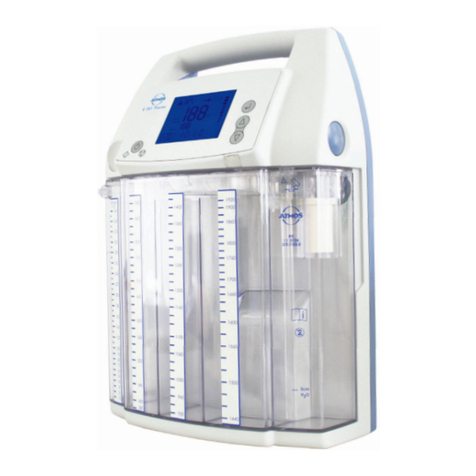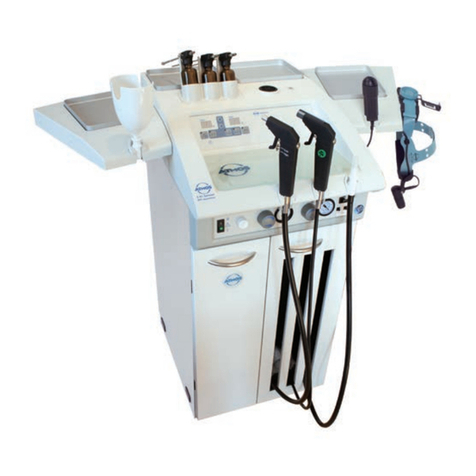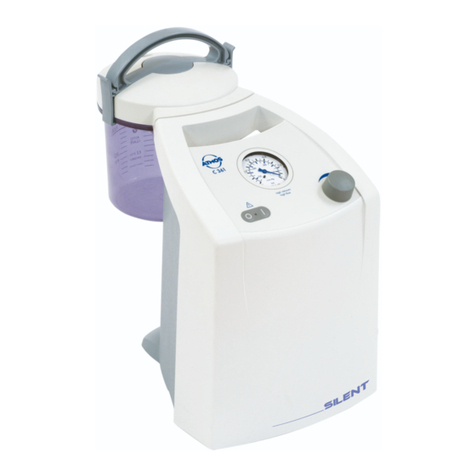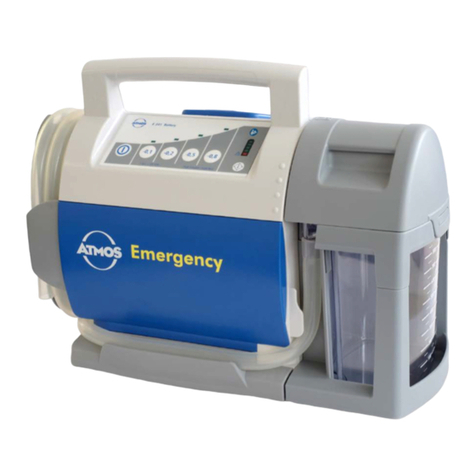Atmos C 161 User manual

Gebrauchsanweisung
ATMOS C 161 Battery
313.0400.B
OM.01
Operating instructions
English
... for a better life
MedizinTechnik

2
ATMOS
Telefon: + 49 7653 689-0
Fax:
+ 49 7653 689-392 (Vertrieb Inland)
+ 49 7653 689-391 (Export)
e-mail: [email protected]
Internet: http://www.atmosmed.de
MedizinTechnik GmbH & Co. KG
Kudwig-Kegel-Str. 16
79853 Lenzkirch
Deutschland/Germany
Further information, accessories, consumables and
spare parts are available from:
Table of contents
8.0 Notes on cleaning ...................................................... 12
8.1 Basic information.......................................................... 12
8.1.1 Cleaning the unit's surfaces ......................................... 13
8.2 Empty the DDS collection jar ....................................... 13
8.2.1 Cleaning the collection jar parts ................................... 13
8.3 Cleaning the rinsing container...................................... 13
8.4 Recommended disinfectants for instruments ............... 14
8.5 Recommendes disinfections
plate for Surface........................................................... 14
8.6 Cleaning and servicing plan ......................................... 15
9.0 Maintenance and servicing ....................................... 17
9.1 Basic informationen...................................................... 17
9.2 Reprocessing ............................................................... 17
9.3 Battery handling ........................................................... 17
10.0 Trouble-shooting........................................................ 18
11.0 Accessories, consumables, ...................................... 19
spare parts
11.1 Accessories.................................................................. 19
11.2 Consumables ............................................................... 19
11.3 Spare parts................................................................... 20
12.0 Technical specifi cations............................................ 21
13.0 Checking / Reprocessing / Disposal ........................ 22
13.1 Checking ATMOS suction devices ............................... 22
13.2 Reprocessing ............................................................... 22
13.3 Disposal ....................................................................... 22
14.0 Notes on EMC............................................................. 23
Declaration of conformity
General Standard Terms and Conditions
1.0 Introduction .................................................................. 3
1.1 Notes on operating instructions...................................... 3
1.2 Function ......................................................................... 4
1.3 Intended use .................................................................. 4
1.4 Scope of supply.............................................................. 5
1.5 Transport and storage................................................... 5
1.6 Explanation of symbols ................................................. 5
2.0 Safety advice ................................................................ 6
3.0 Setting up and starting up........................................... 7
3.1 Operating elements....................................................... 7
3.2 Connection ..................................................................... 7
3.3 Starting up...................................................................... 7
3.4 Charging the battery....................................................... 7
3.4.1 Charging with battery charging power pack ................... 7
3.4.2 Charging with battery charger leads (12V)..................... 7
4.0 General operation ATMOS C 161 Battery................... 8
4.1 Suction hose .................................................................. 8
4.2 Adjust vacuum................................................................ 8
4.3 Suction procedure ......................................................... 8
4.4 Hose rinsing .................................................................. 8
5.0 Operation ATMOS C 161 Battery / DDS ...................... 9
5.1 DDS container and DDS bacterial lter......................... 9
5.2 Insertion of the DDS container ....................................... 9
5.3 Connect hose ................................................................. 9
6.0 Operation ATMOS C 161 Battery / R ......................... 10
6.1 Holder for Receptal®secretion container ..................... 10
6.2 Assembling the Receptal®secretion jar set ................ 10
6.3 Connect hose ............................................................... 10
7.0 Operation ATMOS C 161 Battery / M..........................11
7.1 Holder for MediVac secretion container ........................11
7.2 Assembling the MediVac secretion jar set ................... 11
7.3 Connect hose ............................................................... 11

3
1.0 Introduction
1.1 Notes on operating instructions
These operating instructions contain important notes on how to operate the ATMOS C 161 Battery
safely, correctly and effectively. Their reading helps to avoid risks, and also to reduce repair costs
and down-time. That increases, amongst other things, the reliability and service-life of the device.
These operating instructions serve not only for new operating personnel to be instructed in its use,
but also for use as a reference manual.
These operating instructions must always be kept available near the device.
Care and safety inspections in conjunction with professional execution provide for operational safety
and readiness for use of your ATMOS C 161 Battery and are therefore a must besides regular clea-
ning.
Repair work and safety inspections may be carried out only by expert personnel authorised by
ATMOS. By applying only original spare parts you will have the guarantee that operational safety,
readiness for work and the value of your ATMOS C 161 Battery will be preserved..
● The product ATMOS C 161 Battery bears CE marking according to the EC Directive of the
council for medical products 93/42/EEC and meets the basic requirements of annex I of this
directive.
● The quality management system applied at ATMOS has been certi ed according to international
standards EN ISO 9001 and EN ISO 13485.
● Prior to start-up please peruse chapter 2.0 „For your safety“, in order to be prepared for any
possible dangerous situations.
●These operating instructions correspond to the design of the ATMOS C 161 Battery and the status
of basic safety engineering standards on going to press.
●Reproduction of these instructions – even in part – only with the written permission of ATMOS.
●Subject to alterations and changes.
These operating instructions are valid for the following devices:
• ATMOS C 161 Battery DDS REF 313.0400.0
with 1l DDS grad. secretion container
• ATMOS C 161 Battery Receptal®REF 313.0401.0
with 1l Receptal® container
• ATMOS C 161 Battery Medi-Vac®REF 313.0402.0
with 1l Medi-Vac container
In combination with the accessories mentioned in chapter 11.0
as well as for all identically constructed devices with special
voltage.
Please store this document near the device for later use!

4
1.2 Function
The ATMOS C 161 Battery is a very handy small suction unit. It
is driven by an electromotive, maintenance-free diaphragm-type
pump. During operation, the pump generates a vacuum within the
hose system and the collection jar, thus sucking off secretions or
uids (e.g. by means of a suction catheter). The uid is gathered
in the collection jar. A mechanical over ow safety (on the inner
part of the collection jar lid) avoids penetration of secretion into
the pump head. The nal vacuum and, following, the air- ow rate
can be adjusted by means of the ne control and the vacuum-
gauge. The unit is equipped with a rechargeable battery (accu-
mulator). Integrated microprocessor-based technology assures
safe charging of the battery; overcharging is thus impossible. An
overtemperature stop controlled by electronics avoids overheating
of the unit. A disposable bacterial lter plate integrated in the lid of
the collection jar prevents bacteria and liquid from penetrating into
the pump.
For ATMOS C 161 Battery / DDS:
The reusable secretion container is connected to the pump
housing via direct-docking, without any pedestrian hose system.
Only the suction hose has to be plugged in by the user.
A bacterial lter, located in the lid of the secretion container,
avoids entering of bacterias and liquids into the pump interior.
A mechanical oversuction stop integrated in the container lid
additionally avoids accidentally absorbtion of secretion into the
pump head.
1.3 Intended use
●The ATMOS C 161 Battery s in battery-operated medical suction
device for temporary and spontaneous suction of secretions and
body uids, which typically occure with airway suction.
The elds of application are:
-in-patient and out-patient care, for secretion suction (sputum),
body uids and rinsing liquids.
- in geriatric nursing for secretion suction (sputum), body uids
and rinsing liquids as well as for spontaneous suction of foreign
bodies, for example, after a foreign body aspiration.
-in home care for bronchial toilet on laryngectomy and tracheo-
tomy patients (with tracheal cannula). Especially for aspiration
of mucus, sputum, secretion and body uids in tracheostoma
patients.
1.0 Introduction
●The ATMOS C 161 Battery may not be used:
• for drainages in low vacuum ranges (e.g. for thorax drainage)
• for suction procedures outside medical ranges
(for the suction of infl ammable, corrosive or explosive fl uids/gases)
fi g 1.
ATMOS C 161 Battery / DDS
Vacuum gauge
Vacuum control
On/off push button
Charge level indicator
Battery test button
Hose holder
Sliding cover for protecting the
control elements
!

5
1.4 Scope of supply
●Prior to dispatch, this ATMOS device was subjected to an extensive functional test and has been carefully packed.
Nevertheless, please compare the contents of the shipment on completeness immediately upon receipt (see delivery note).
In addition to the basic device, the scope of delivery comprises the following parts:
1.6 Explanation of symbols
The CE sign shows that this
product meets the appropriate
requirements of the EC
guidelines.
1.5 Transport and storage
● The transport of the device may be effected only in a dispatch
carton upholstered and offering suf cient protection.
● Please document and report damages in transit immediately.
For complaints or return deliveries, please use the enclosed
form QD 434.
●The unit must be allowed to stand for up to six hours at room
temperature prior to starting up for the rst time following
transport at temperatures below freezing. The unit may not
be operated if it has not acclimatised as this might damage its
diaphragms.
Warning,
especial diligent notice !
Serial number
Order number
Application part type BF
Manufacturing date
Pump On/off
Battery test function (only
ATMOS)
Fuse
Protection class II
Important information!
ATMOS C 161 Battery / DDS ATMOS C 161 Battery / RATMOS C 161 Battery / M
●Ambient conditions:
Transport/Storage: -30...+50°C;
5...90 % air humidity
non-condensing
at air pressure 700...1060 hPa
Operation and +10...+35°C;
battery charging: 20...80 % air humidity
non-condensing
at air pressure 700...1060 hPa
ATMOS C 161 Battery, scope of supply of all versions:
Grad. secretion
container (1l)
2 DDS
bacterial fi lter
Lid for secretion
container with
triple oversuction
safety
MediVac
suction bag (1l) Receptal®
suction bag (1l)
Battery charging
power pack
Hose connector
(fi ngertip)
Silicone
suction hose
Ø 6mm, L= 1,30m
MediVac
container (1l)
Support
Receptal®
containter (1l)
Support
1.0 Introduction
REF
SN
Other manuals for C 161
1
Table of contents
Other Atmos Medical Equipment manuals

Atmos
Atmos 318.0000.0 User manual

Atmos
Atmos LS 21 LED User manual
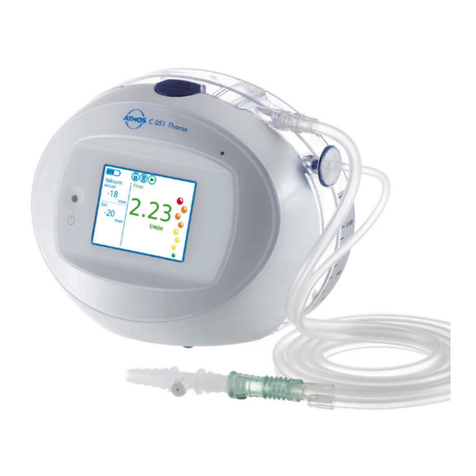
Atmos
Atmos C 051 Thorax User manual
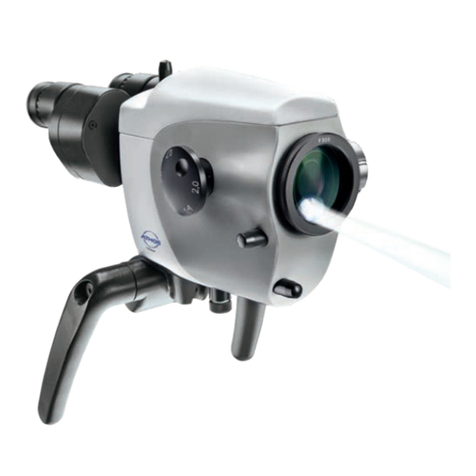
Atmos
Atmos i View COLPO User manual
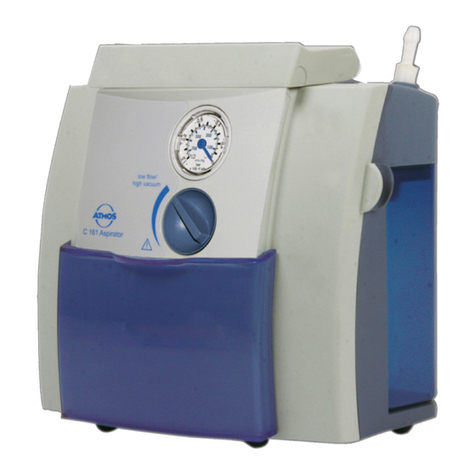
Atmos
Atmos A 161 User manual
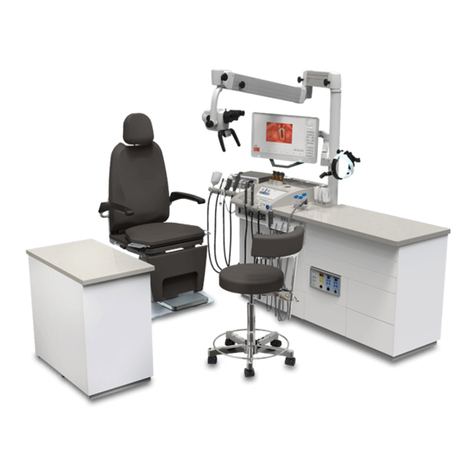
Atmos
Atmos S 61 CORIAN integral User manual
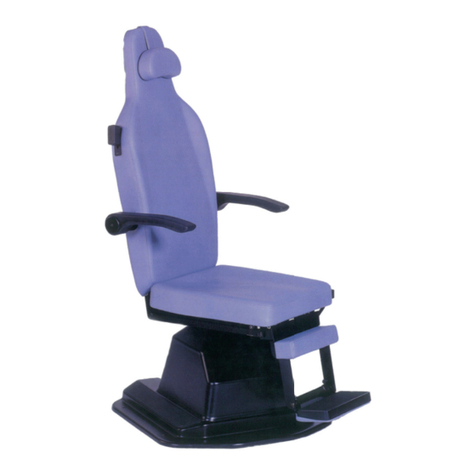
Atmos
Atmos E 1 User manual
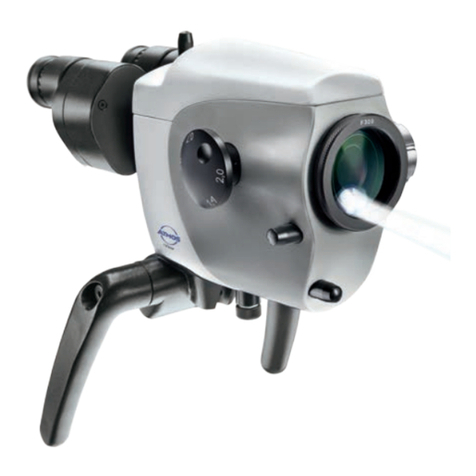
Atmos
Atmos i View 21 COLPO User manual
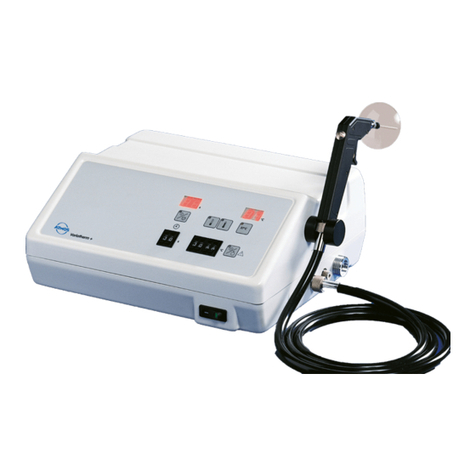
Atmos
Atmos Variotherm plus User manual
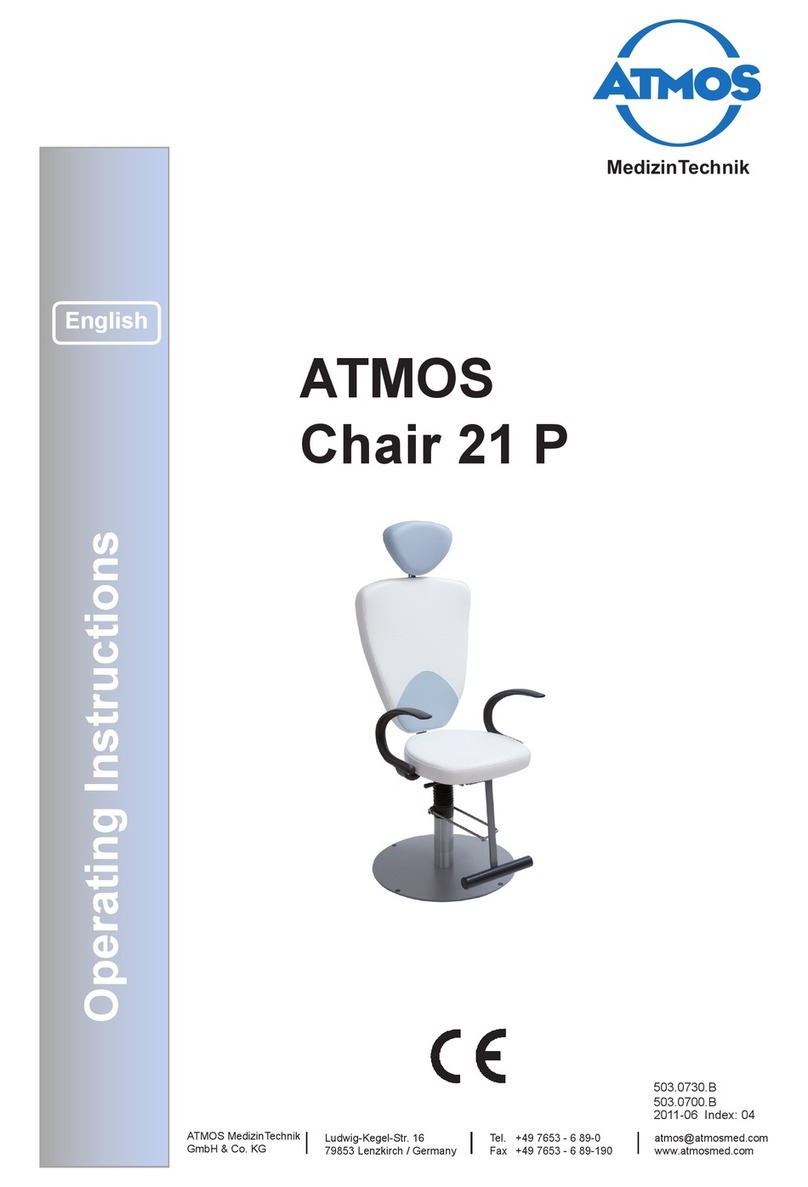
Atmos
Atmos Chair 21 P User manual
Popular Medical Equipment manuals by other brands

Getinge
Getinge Arjohuntleigh Nimbus 3 Professional Instructions for use

Mettler Electronics
Mettler Electronics Sonicator 730 Maintenance manual

Pressalit Care
Pressalit Care R1100 Mounting instruction

Denas MS
Denas MS DENAS-T operating manual

bort medical
bort medical ActiveColor quick guide

AccuVein
AccuVein AV400 user manual
